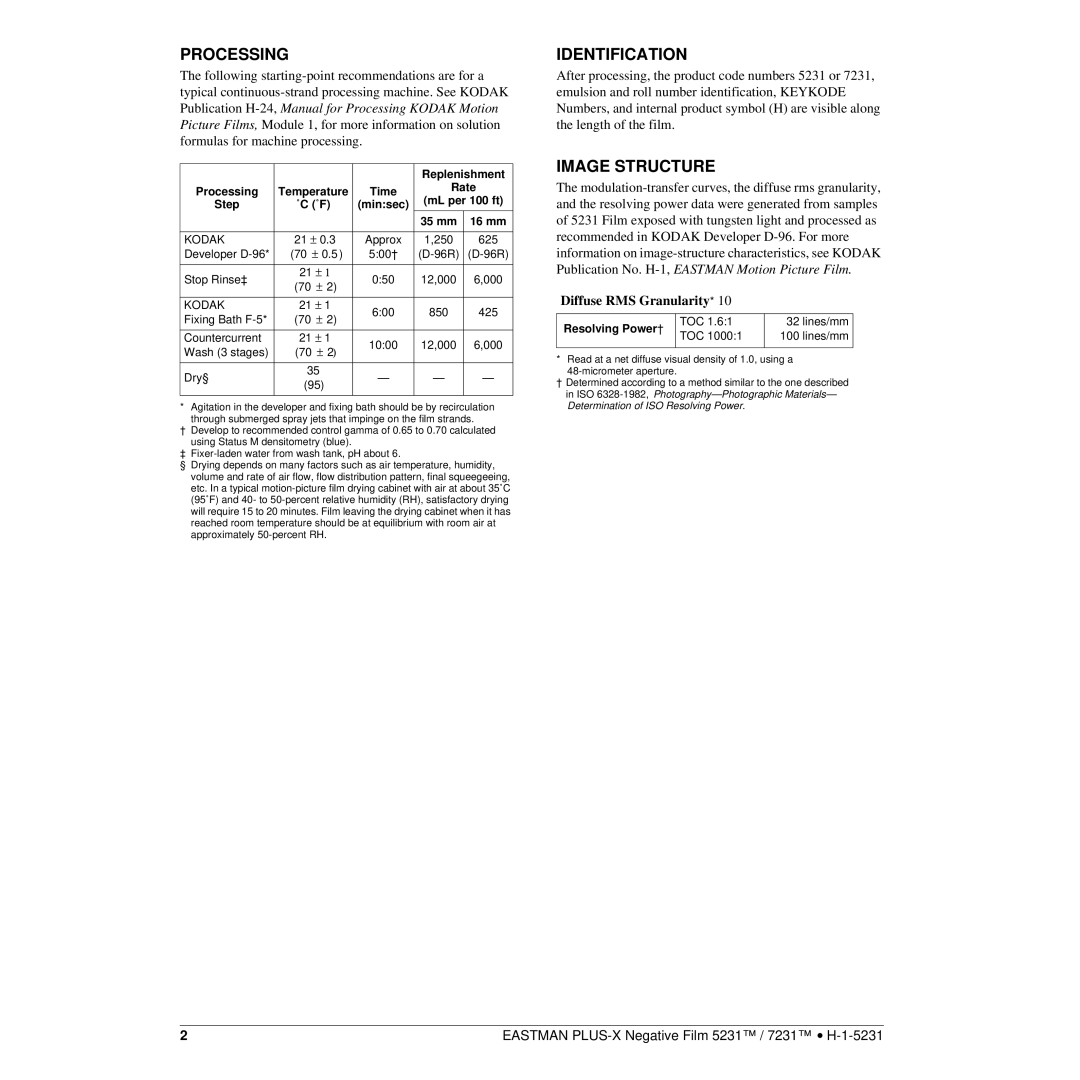
PROCESSING
The following
|
|
| Replenishment | ||
Processing | Temperature | Time | Rate | ||
(mL per 100 ft) | |||||
Step | ˚C (˚F) | (min:sec) | |||
|
| ||||
|
|
| 35 mm | 16 mm | |
|
|
|
|
| |
KODAK | 21 ± 0.3 | Approx | 1,250 | 625 | |
Developer | (70 ± 0.5) | 5:00† | |||
|
|
|
|
| |
Stop Rinse‡ | 21 ± 1 | 0:50 | 12,000 | 6,000 | |
(70 ± 2) | |||||
|
|
|
| ||
|
|
|
|
| |
KODAK | 21 ± 1 | 6:00 | 850 | 425 | |
Fixing Bath | (70 ± 2) | ||||
|
|
| |||
|
|
|
|
| |
Countercurrent | 21 ± 1 | 10:00 | 12,000 | 6,000 | |
Wash (3 stages) | (70 ± 2) | ||||
|
|
| |||
|
|
|
|
| |
Dry§ | 35 | — | — | — | |
(95) | |||||
|
|
|
| ||
|
|
|
|
| |
*Agitation in the developer and fixing bath should be by recirculation through submerged spray jets that impinge on the film strands.
†Develop to recommended control gamma of 0.65 to 0.70 calculated using Status M densitometry (blue).
‡
§Drying depends on many factors such as air temperature, humidity, volume and rate of air flow, flow distribution pattern, final squeegeeing, etc. In a typical
IDENTIFICATION
After processing, the product code numbers 5231 or 7231, emulsion and roll number identification, KEYKODE Numbers, and internal product symbol (H) are visible along the length of the film.
IMAGE STRUCTURE
The
Diffuse RMS Granularity* 10
Resolving Power† | TOC 1.6:1 | 32 lines/mm | |
TOC 1000:1 | 100 lines/mm | ||
| |||
|
|
|
*Read at a net diffuse visual density of 1.0, using a
†Determined according to a method similar to the one described in ISO
2 | EASTMAN |
